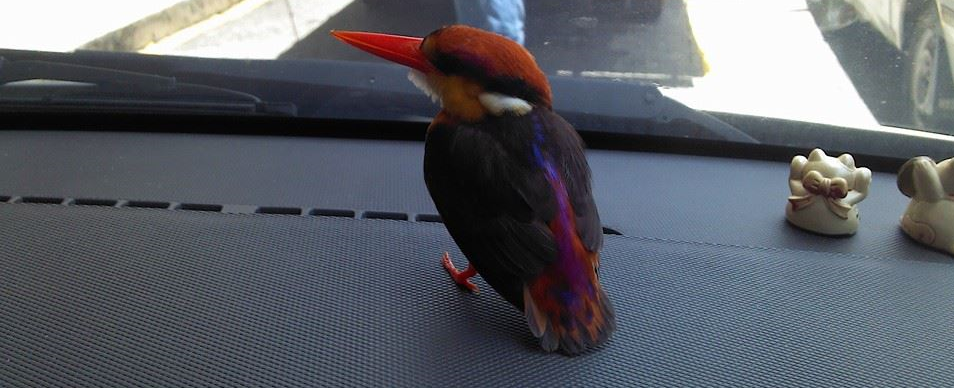
Birds of Pandemonium by Michelle Raffin was a good read. I bought this book and several other books during the Big Bad Wolf 2020 Virtual Book Sale. The breeding of her Green-Naped Pheasant-Pigeon (GNPP) species - categorized as Least Concern in BirdLife's website HERE, was a tears of sorrow turn tears of joy moment for me. I didn't know these pheasant-pigeons were easily startled and that they'd break their necks against branches whilst sitting on their nests in the forests of their natural breeding grounds in New Britain Island, Papua New Guinea. Lancelot, the GNPP was one of her earliest adoptees (pictured below from her book together with the Australian crested dove and Bleeding-heart dove). Her life as an Aviculturist was tough but the moments of tenderness and understanding that she shared with her adoptees including a very clever zebra finch named Oscar (which had an injured wing), were testament to the ingenuity of birds and how these species can adapt to new surroundings such as her Aviary.
Read about her struggles with the rescued birds and those adopted by her. To manage an aviary, looking after the exotic birds and subsequently turning her residence into a breeding site for some of the pigeon and dove species, were to me all gargantuan tasks faced by her as an aviculturist. Can just imagine all the planning permissions she'd had to obtain for the construction of aviaries adjacent to her house. An extract from her book in the final chapter is reproduced below:-
But I am coming to realize that in our efforts to understand birds and partner with them, meaningful advances don't necessarily come in big leaps. As I learned from Oscar the finch when we built the ladder, no matter how high the aspirations, progress comes in incremental step. Yes, bird by bird.
The GNPP, Crowned Pigeons, Bleeding Heart Doves, Nicobar Pigeons are some of the Species which form part of Pandemonium's Breeding Bank, based on their website HERE.
Royal Albatross cam by the Cornell Lab and New Zealand's Department of Conservation can be viewed HERE. When the researchers and caretaker kneel near the nesting Royal Albatross, the latter is about the same height as them. IF Royal Albatrosses are that huge, can imagine the size of the biggest albatross species in the world which is the Wandering Albatross. Some of the visitors to this nesting site included the White-faced Heron, Little Owl, Little Penguin and a Fur Seal pup. The Royal Albatross chick was named "Atawhai" which means "Kindness" in Maori language. The video contained highlights from the 8 full months of nesting season from the incubation of the egg, hatching of the chick until the ready-to-fly phase of Atawhai. Spot the Owl in the screenshot from video cam below:-
 Atawhai ready to fly amidst the terribly strong winds of the Taiaroa Head, New Zealand. The conservationists were wearing really thick coats when weighing the fully-grown chick so I can just imagine how cold it was in this place! Screenshot from videocom below:-
Atawhai ready to fly amidst the terribly strong winds of the Taiaroa Head, New Zealand. The conservationists were wearing really thick coats when weighing the fully-grown chick so I can just imagine how cold it was in this place! Screenshot from videocom below:-

It has been challenging having to work and live during the Conditional Movement Control Order (CMCO) imposed in the Klang Valley since October 2020. Birdwatching in the field had to be put on hold. Reading the book, and watching the Royal Albatross pair looking after and bringing up baby were in some ways an indoor birding experience.

